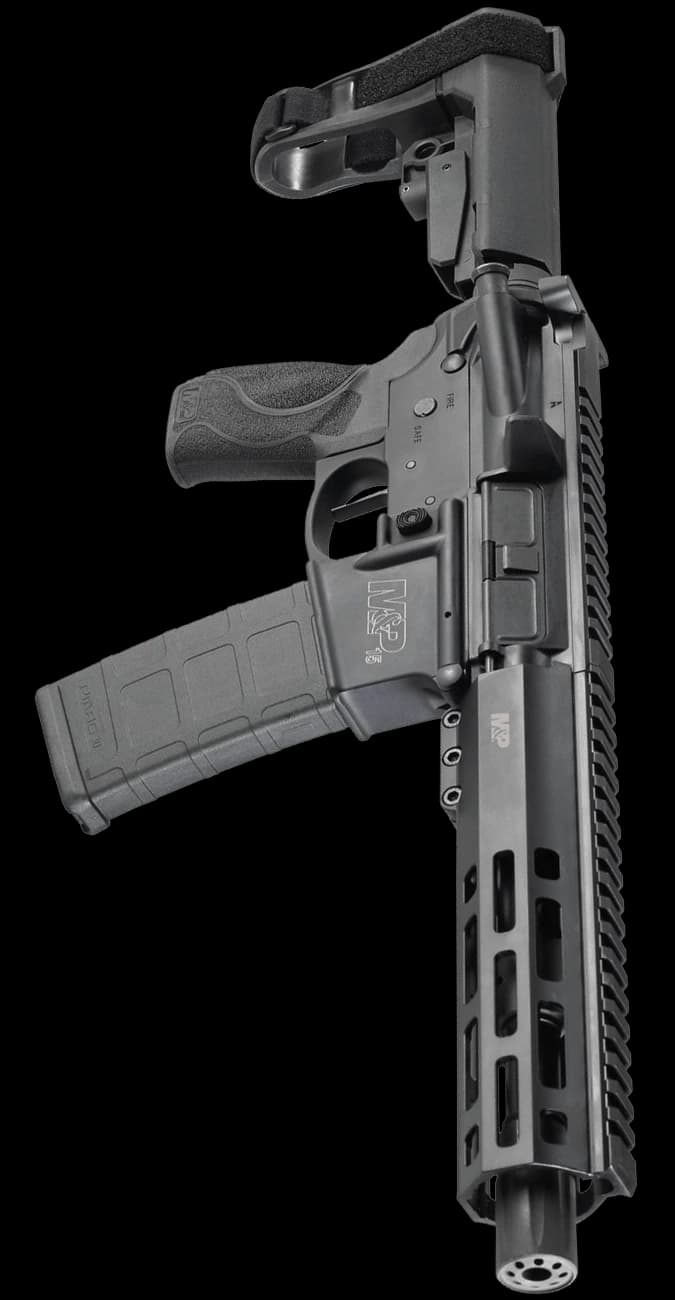What Does Free-Floating Mean with an AR-15?

"Free-floating" is a term you hear all the time with firearms. Mentioned in virtually all rifle product descriptions these days, it is touted as a huge selling point. That's all well and good if you understand what is actually being said. Understanding the features of a gun you're looking to buy is important, so did you know that "free-floating" has a different meaning when dealing with the AR-15?
Barrel vs Handguard
Many people use the term "free-floating barrel," which is correct when discussing bolt-action rifles. However, that's not the case with an AR-15. In reality, the correct term is "free-floating handguard."
People often mix them up or think that they can be used interchangeably, but that's not the case. They mean two different things when talking about an AR-15, and it's not just an issue of semantics.
Why Isn't an AR-15 Barrel Free-Floating?
The barrel on an AR-15 isn't free-floating because of the gas block. Because an AR-15 is a gas-operated firearm, it utilizes a gas block and a gas tube to cycle the action and prepare the gun to fire the next round. The gas block is mounted near the muzzle of the barrel, and it channels some of the gasses created when firing a round up into the gas block and back into the gas tube.
The gas tube goes into the gas key on the bolt carrier group, and the bolt carrier group is driven to the rear by the gas and pushed back forward again by the buffer spring. The connection between the gas key and the gas tube creates a point of contact for the barrel other than just the front of the receiver.
While that contact might not be much in the grand scheme of things, it's enough to make it so that the barrel is not, in fact, free-floating.
Free-Floating vs Drop-In Handguards
Just as it sounds, a free-floating handguard is one that does not make any contact with the barrel. Instead, it floats over and around the barrel. The only point of contact between the handguard and the rest of the gun is where it attaches to the front of the receiver.
A free-floating handguard will cover the barrel, but it won't touch it. This type of handguard is usually made from one solid piece of material.
In contrast to a free-floating handguard, a drop-in handguard is usually made from two separate pieces of material. These two pieces join together and are held in place via tension exerted from the delta ring at the front of the receiver and rear of the barrel. A drop-in handguard makes contact with the front of the receiver as well as on the barrel closer to the muzzle. This extra point of contact can impact the way your gun shoots.
Benefits of Free-Floating Handguards
The AR platform is sometimes jokingly referred to as "LEGOs for adults" because of the ease with which you can attach accessories to it.
When you add things like a bipod, weapon-mounted light, laser unit, or any other kind of accessory to the handguard, you're adding weight to the overall firearm in a way that isn't balanced because they're mounted on the front half of the gun. If those items are added to a free-floating handguard, then you don't have to worry about the weight impacting how your barrel performs.
While the items themselves may not weigh all that much, if they are mounted to a drop-in handguard, they will have a direct impact on your barrel by adding extra stress to it. That additional stress can change your point of impact, which means that you may need to sight your AR-15 in again depending on what accessories you've added to it - and perhaps even again if you remove them.
Another way your AR-15 can be impacted by a drop-in handguard is that it can change your barrel harmonics. Even though you cannot see it, your gun's barrel is actually flexible and it does move. The added weight of accessories on a drop-in handguard can cause a change in barrel harmonics, which can cause your shot groups to open up.
Drop-In Handguards Have Their Place
Make no mistake: drop-in handguards aren't bad. They definitely have their advantages. First and foremost, they can easily be removed without any tools. All you need to do is remove the spring pressure from the delta ring by pulling back on it and the two pieces of the drop-in handguard can be popped off.
Once removed, you can easily swap out the factory handguard for one of your choice. In general, they're also less expensive than free-floating handguards.
If you're looking for a budget AR-15 or you know you won't be adding accessories to the handguards, then there's no reason you can't use drop-in handguards and have a gun that shoots great.
Why Not Both?
Of course, variety is the spice of life, and if you can afford it, you should probably have at least two AR-15s in your possession - one with drop-in handguards and one with free-floating handguards. Why? Why not!



